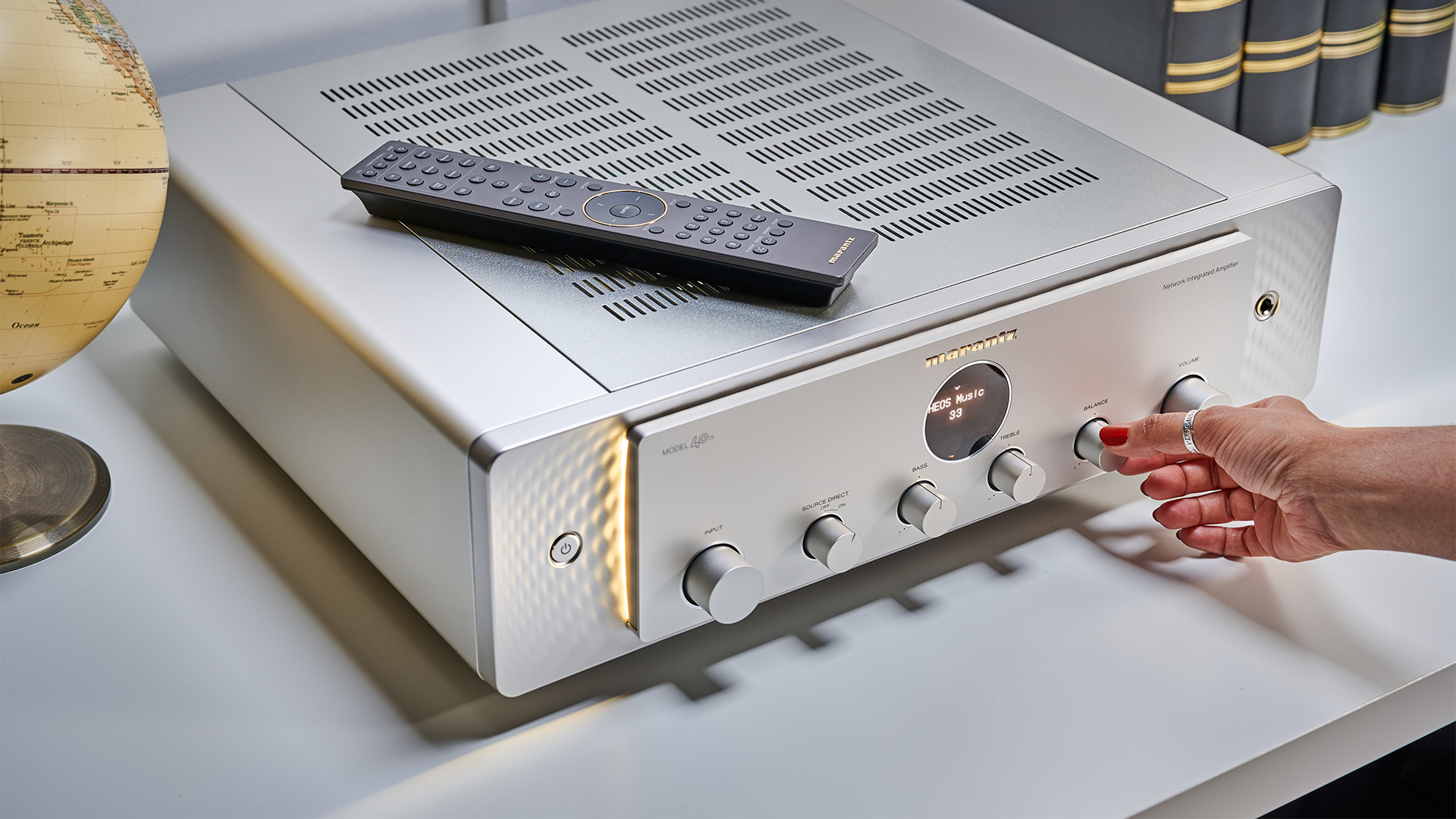
Isn’t this a beauty? The emergence of all-in-one systems in the world of hi-fi has meant more lifestyle-friendly models in both size and looks, and the Marantz Model 40n is a prime example of just how much first impressions matter. Immediately visually appealing, all you need to do is add a pair of speakers to this unit and you’ve got a tidy hi-fi system.
The Marantz Model 40n was first unveiled in early 2022 with a launch price of £2199 / $2499 / AU$4499 / €2499. That price has since come down a few hundred for patient potential buyers in the UK, where it’s now available for £1899.
A premium just-add-speakers system such as this Marantz has strong competition from the likes of the Cambridge Audio Evo 75 and Evo 150 and the Naim Uniti Atom, all of which are five-star products. Marantz has previous form in this category too, with the older and more affordable Marantz PM7000N (tested at £999 / $999 / AU$1999) wowing us enough with its entertaining sound to win a 2021 What Hi-Fi? Award.
Build
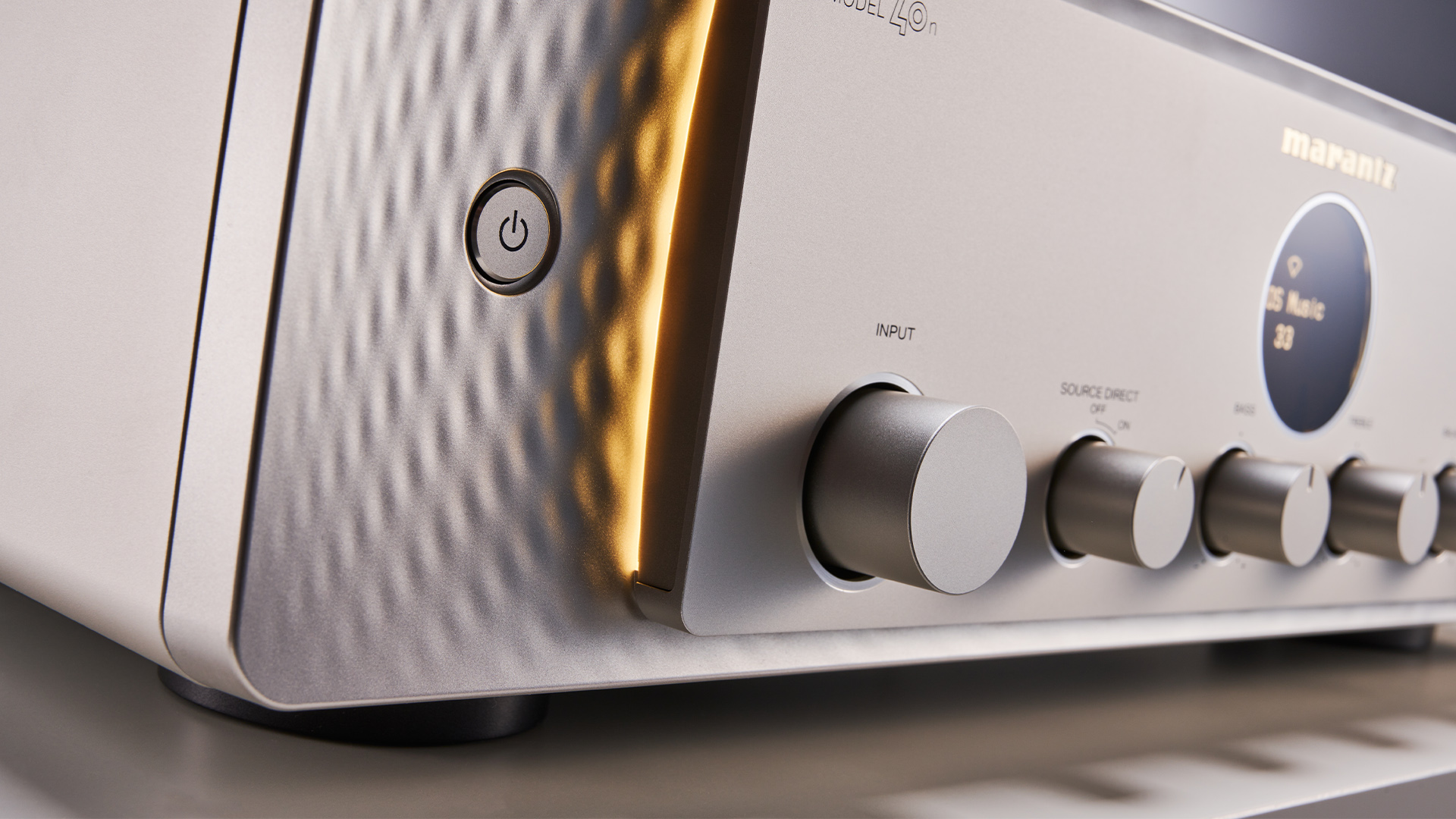
The Marantz Model 40n, however, is a different proposition. Marantz is keen to reposition itself as a luxury hi-fi brand and that intent is clear in the 40n’s gorgeous build and aesthetics.
It’s an elevated, sophisticated step above the PM7000N and the budget 6000-series models we’ve seen before, but still built with terrific attention to quality. The metal casing and elegant fascia are made to a high standard. We like the simplicity of the control dials being all in a row (which are a joy to use); the subtle illumination that glows around the panel; and that lovely little circular display. It all combines to create a classy unit that we can imagine will instil pride of ownership in any buyer. We have the silver gold finish for review, but you can also get the 40n in black.
We also imagine many will prefer the larger, informative displays you get on the Cambridge Audio and Naim systems that show album art in full colour, but we didn’t miss it as much as we’d thought on the Marantz. The small porthole display looks nice and the input source and volume level displayed are useful for at-a-glance reading.
The dimpled effect flanking the extruded front panel gives the unit a further distinctive look, but we find it to be a plastic-feeling finish upon closer look. It seems a tad incongruous with the rest of the sturdy metal finish.
At its heart lies Class A/B amplification that outputs a decent 70 watts of power per channel (into 8 ohms). Why Class A/B and not Class D, as we’re seeing increasingly with systems such as Cambridge’s Evo? Marantz says that while it has used Class D in higher-end models to good effect, the way it’s implemented to make sure it meets Marantz’s hi-fi heritage standards (and sheds the hard or clinical presentation that can be associated with Class D) would be far too expensive for this model’s price point. Using Class A/B, therefore, keeps the characteristics of analogue sound that’s appealing to many users, while also being more cost-effective at this level.
Features
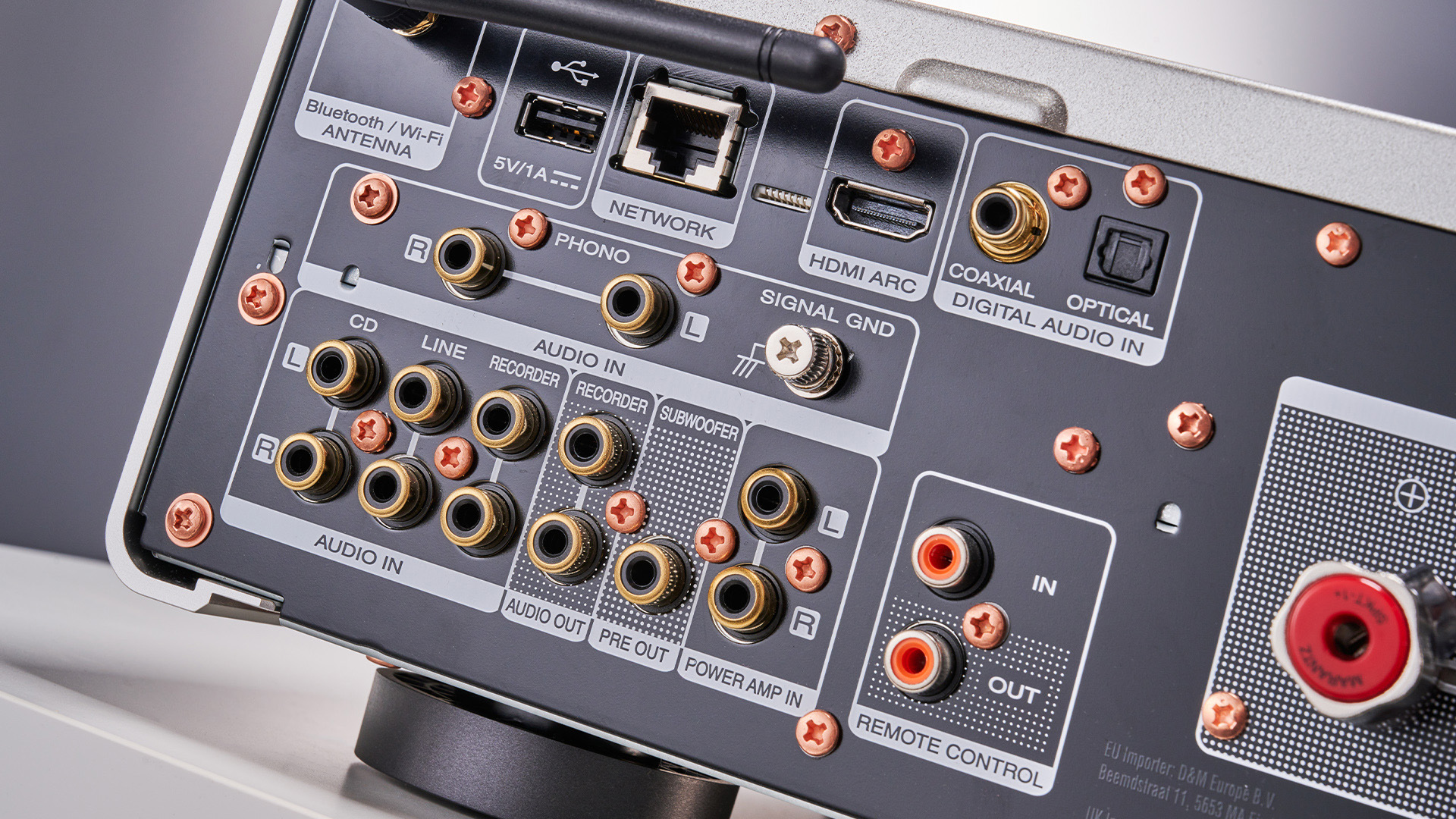
A fully-fledged modern streaming system such as the Model 40n isn’t short of ways of listening to music. Once connected to your home network (ethernet and wi-fi are both available), you have access to plenty of streaming options at your fingertips. Music streaming services such as Amazon Music, Deezer, Spotify Connect and Tidal, and TuneIn internet radio station are available thanks to the HEOS platform and app (more on that later), while AirPlay 2 and Bluetooth are on board for easy streaming from mobile devices. If you’ll be using wi-fi or Bluetooth regularly, we’d recommend installing both antennae provided in the box for maximum stability and strong connection.
For those with servers and NAS devices filled to the brim with hi-res digital music files, the 40n can stream files from those over the network thanks to DLNA compatibility. It can handle playback of up to 24-bit/192kHz PCM and DSD128 files. Hardcore DSD fans and those looking for the upper limits of bit resolution (over 32-bit, DSD256) might want to look elsewhere, but considering the majority of our digital music files are within the 40n’s limits, we don’t find this a problem. Interestingly, the Model 40n uses an ESS Sabre ES9016K2M DAC chip inside, the very same one also used in the Award-winning Cambridge Audio CXA81 amplifier and the Evo 75 system, the latter of which can handle up to 32-bit files.
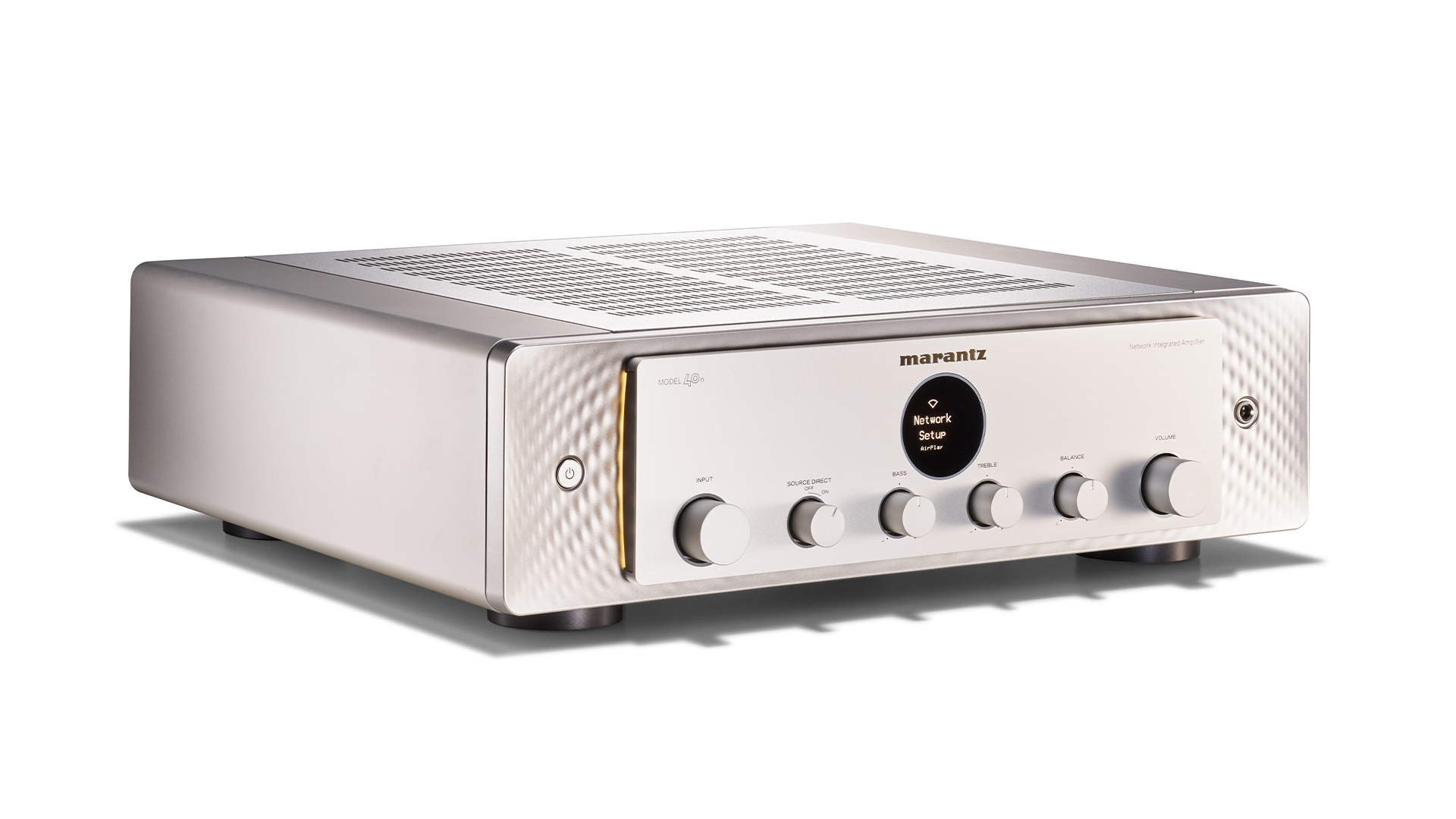
Sources Network streaming, Bluetooth, AirPlay 2, Phono MM
Headphone output? Yes, 6.3mm
Network Wi-fi, ethernet
Inputs Line level x3, phono, HDMI ARC, optical, coaxial, USB Type A
Hi-res support 24-bit/192Hz (PCM), DSD128
Power output 70 watts per channel (into 8 ohms)
Dimensions (hwd) 13 x 44.3 x 43.2cm
Weight 16.7kg
Finishes x2 (black, silver gold)
Prefer using physical inputs instead? Marantz has you covered there too, with three line-level analogue inputs, two digital inputs (one optical, one coaxial) and a USB A port for plugging in sources like a CD player, external streamer, or your laptop. There’s an HDMI ARC for hooking the 40n up to your TV – it’s certainly a more stylish and sonically appealing way to upgrade your TV’s sound. A built-in moving magnet phono stage ensures you can connect your turntable directly to the Marantz. You can also even pile on extra bass with the subwoofer output.
Switching between all these sources, and choosing and controlling music playback can be done using the HEOS app for iOS and Android. HEOS is the multi-room streaming platform and app that’s found with various Denon and Marantz networked products, including the 40n. It’s a neat, clean interface that does the job, although the layout isn’t quite as intuitive or as slick as similar control apps for Naim and Sonos systems that we rate highly.
Particularly puzzling is the way it plays after you choose a song: instead of continuing to play from that song onwards as every other music service and app does, the HEOS app jumps back to whatever song or album was playing in the previous queue. A “play from here” option would be useful. The now-playing page does show album artwork, file type and sampling rates, and choosing music services from within the app is easy enough.
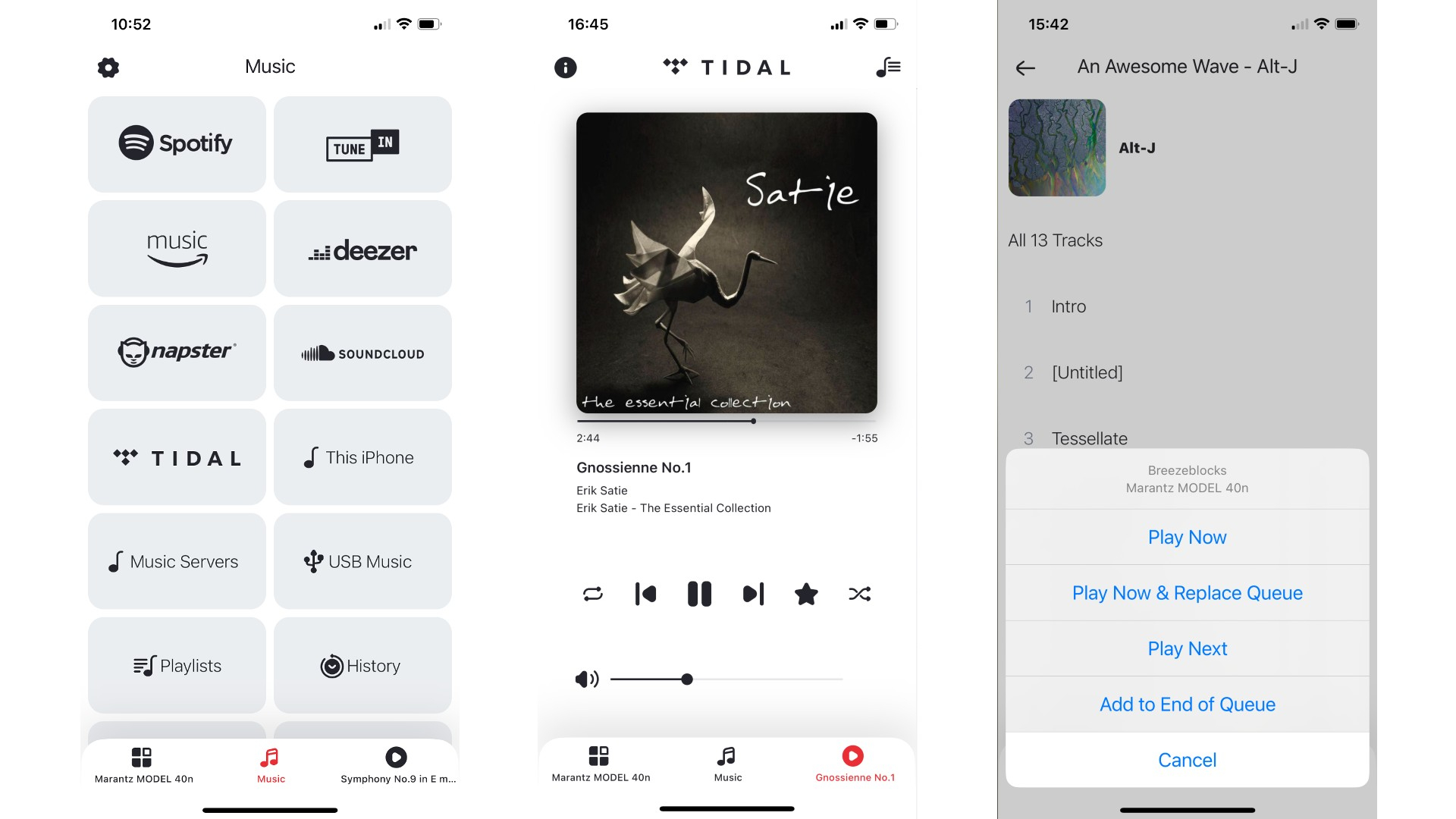
We think it’s a shame that the designed-for-all HEOS app isn’t bespoke to the 40n, as many of the product’s set-up options can only be accessed through the unit using the included remote control. It’s a sturdy, well-designed handset that matches the main unit, whereas the app feels curiously sparse and at odds with the luxury feel of the physical products.
The remote lets you switch inputs, pause/play/skip tracks and delve into the 40n’s basic menu settings. This lets you adjust standby mode, and choose your TV input, network and filter options. The options can be tricky to read in the small porthole display as the words are cut off, but they’re simple enough to get by.
The Model 40n offers tone controls and two filter options, but we preferred to keep the source direct option on (which turns off any DSP) for the purest audio signal and clearest performance.
Other practical issues we encountered during our weeks with the Model 40n were with Bluetooth pairing, which took much longer than we’d expect in a system like this, and there were occasions when the app stopped being able to see or display our music server when we were switching inputs. These hiccups were few and far between, but they stand out simply because we’ve experienced a much smoother operation with other systems.
Sound
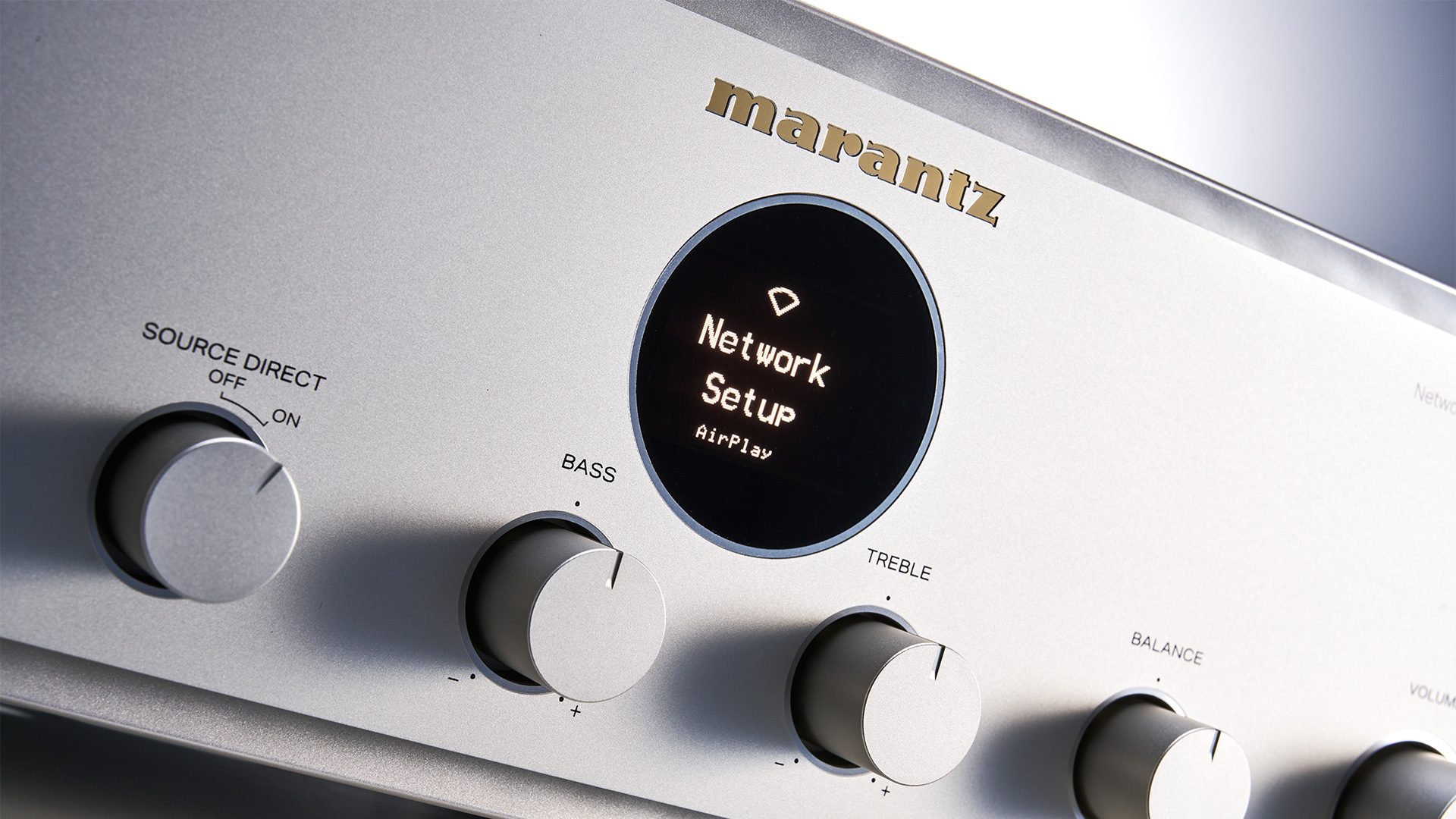
Despite how long it’s taken us to get to the sound quality section, playing music from the Model 40n doesn’t take long at all. Whether it’s from a server or Tidal, from a connected turntable or even AirPlay, every track we fling at the 40n is handled with speed and grace.
We use our usual ATC SCM50 reference speakers for our testing, but more natural pairings for the Model 40n can be plucked from a range of price-appropriate speakers, from the B&W 606 S2 Anniversary Edition to the Wharfedale Diamond 12.3 to the KEF LS50 Meta – pick your poison.
We also use the Technics SL-1000R/Vertere Sabre MM turntable to test the phono stage, connect our reference Naim ND/555 PS DR streamer to test its DAC, and use a pair of Grado RS1x headphones to test the 6.3mm headphone output.
Through it all, the Model 40n delivers a clear, powerful and spacious sound. It’s big and bold: a presentation that’s appealing right from the beginning. Agnes Obel’s vocals come through with pristine clarity, precisely placed in a vast soundfield that’s roomy enough for the cellos and piano notes in her Aventine album to soar around her. Alt-J’s Breezeblocks flows smoothly through the 40n, with no undue preference given to any frequency. We play song after song from our server, from John Williams to Taylor Swift, and the 40n fills our large listening room with ease.
Play something heavier like Disturbed and Slipknot, and the Marantz’s punchy, hefty low end comes into play. Songs that can get too aggressive or hard-edged are surprisingly comfortable to listen to through the Marantz. It may not be the most transparent or rigorously authentic, but it does make for a less fatiguing listen. It’s a presentation that many will like, as it’s very easy to live with.
It’s the same story regardless of which source you’re using – vinyl, hi-res streams or whether listening through headphones – the 40n offers an undemanding listen. This isn’t an analytical beast and we’re fine with that, but we wish it was more willing to dig up textures and nuance, to marshall rhythms with more precision and accuracy to really captivate us. Dynamically, we wish it worked a bit harder to relay the inherent drama and tension within a piece of music.
Obel’s ethereal vocals and that cello in The Cursed should tear at your heart; it doesn’t here. The Model 40n plays it safe, smoothing off the edges of Eminem’s biting lyrics to appeal to a wider variety of listeners. Rival systems such as the Evo and Uniti do a better job of engrossing us in the music; they’re simply more insightful, musically engaging and dynamically exciting by degrees.
Verdict
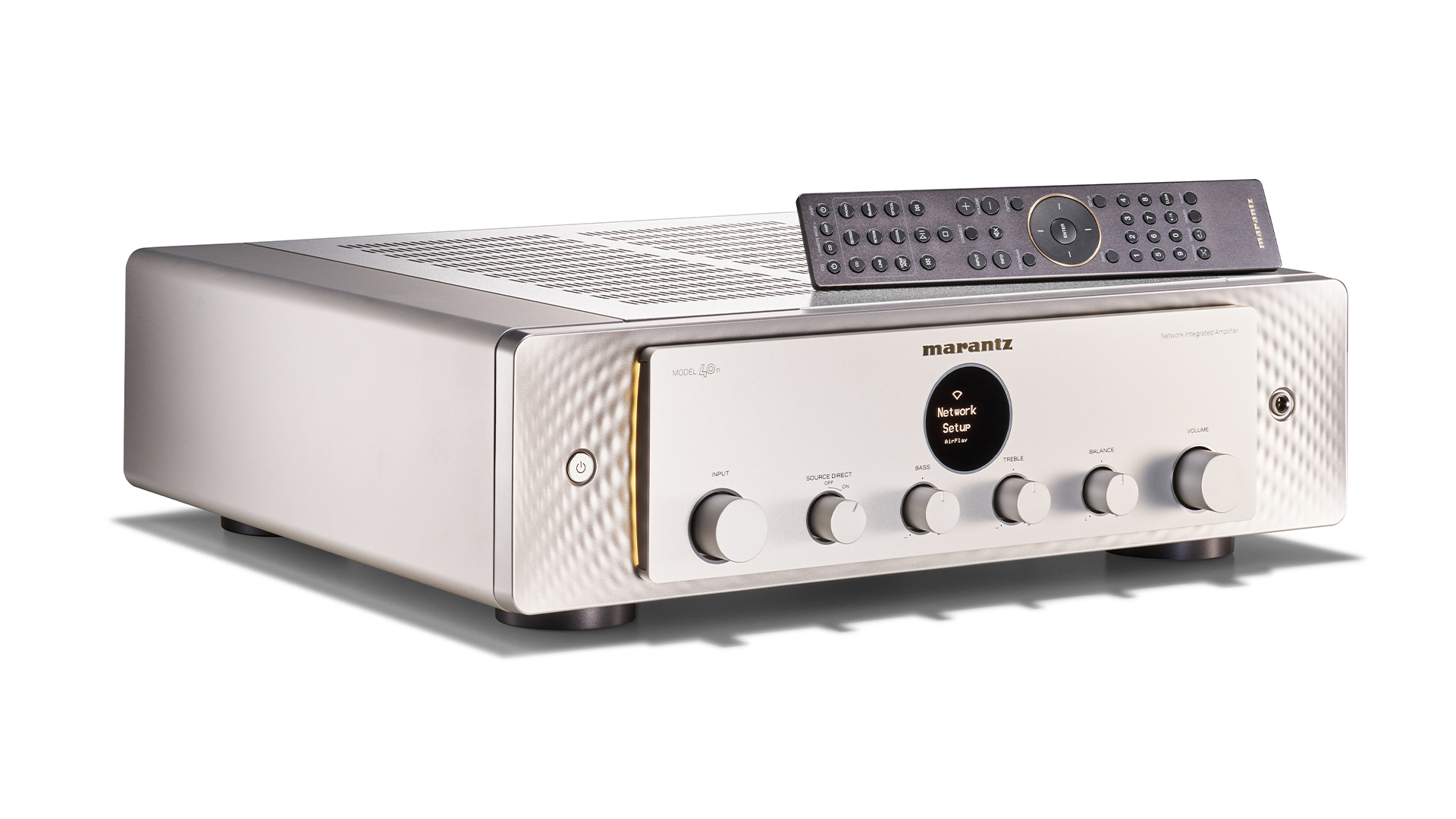
There’s so much that the Marantz Model 40n gets right, but we want more. The design, the build quality, the ease of use (bar our niggles with the app) – it’s a lovely piece of kit.
The Marantz is also admirable in its large-scale, rich, punchy yet relaxed delivery, but we were hoping for shades of that exciting balance we’ve long heard from the brand’s more budget products, such as the 6000 series. Those products, many of them Award winners over the years, have the skill and nuance to strike the right balance of clarity, punch and rigorous musicality to win us over.
If Marantz plans to make a mark two version of the Model 40n, we hope it listens back to some of those budget stars to bring back that magic to this otherwise very likeable all-in-one streaming system, and make it sound even better.
SCORES
- Sound 4
- Features 4
- Build 5
MORE:
Read our review of the Naim Uniti Atom
Also consider the Cambridge Audio Evo 150







